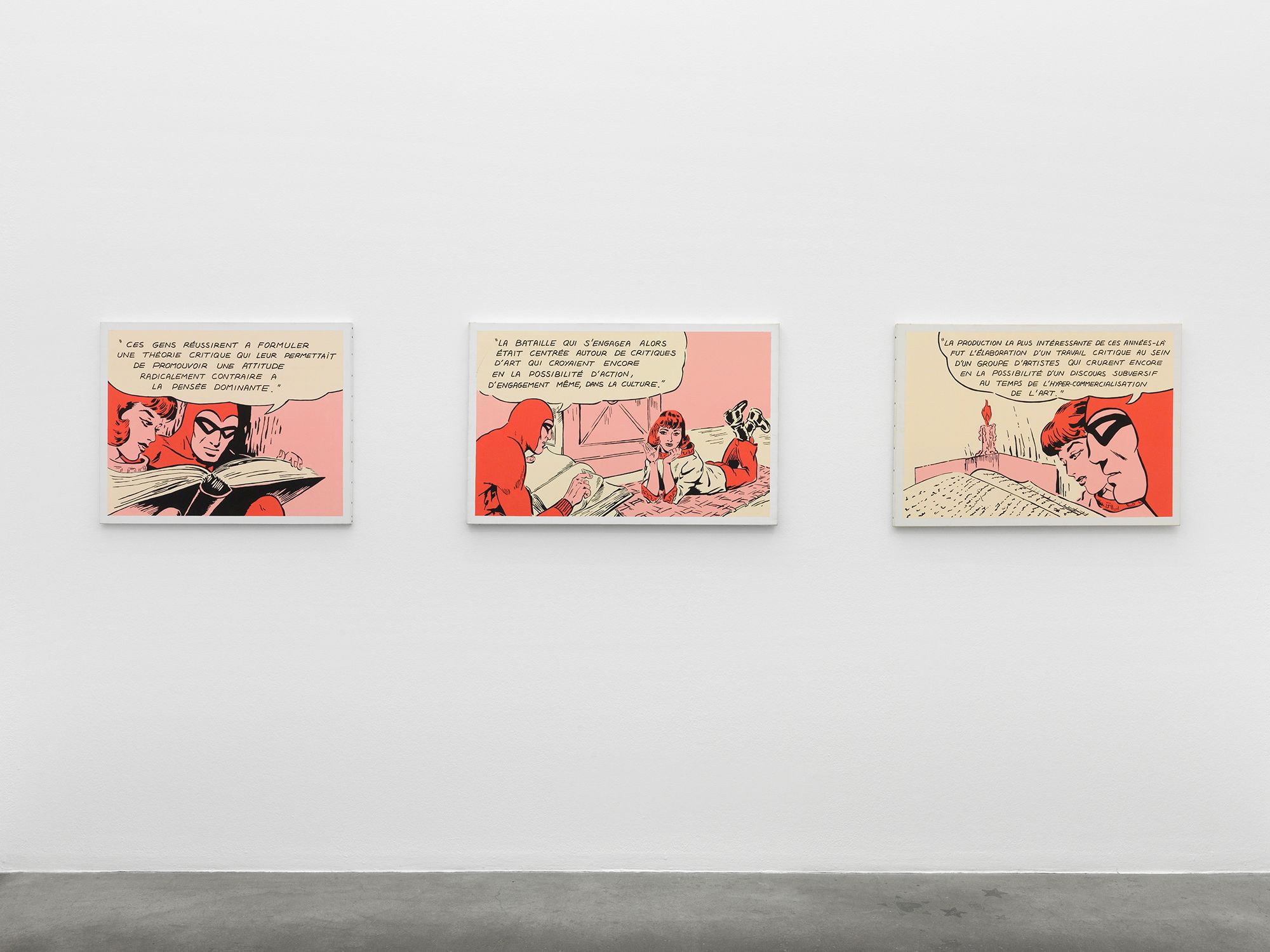The exhibition Fictional Artists brought together works by artists who remain—more or less hermetically—hidden behind pseudonyms or heteronyms.
Vern Blosum, the oldest of these personalities, was active on the New York Pop art scene as early as 1961. When his fictional identity was revealed, and even though two of his pieces had already been acquired by MoMA, his work was seen as being an imposture and was thus forgotten for a half a century. And yet, the artist concealed behind Vern Blosum had invented an authorial figure crystallizing the artistic sensitivity of the period and providing, along with a formal irony, an observation of the workings of the art system and the importance of its various agents.
These questions were also examined, two decades later, by the gallerist Colin de Land. In the basement of his space, American Fine Arts, he secretly gave life to two heteronyms: the first, John St. Bernard, explored the figure of the saint in the cinema or popular culture; the other, John Dogg, invented with the complicity of Richard Prince, appropriated the use of ready-mades applied to the world of cars. Meanwhile, Prince, as a central figure of appropriation in the 1980s, was pastiched by Donelle Woolford who overturned the connotation of Joke Paintings by attributing them to a female Afro-American artist and having them produced by her collaborators.
This mix of roles between the gallerist and artist with borrowed names can also be found with Reena Spaulings. This heroine of a novel written collectively in 2004 gave her name to a New York gallery before displaying—in other galleries—works dealing with the relationship between art and the market, such as opening-night tablecloths raised as standards. As for Henry Codax, he was a minor character in the novel Reena Spaulings with real artists setting about producing his works.
This exhibition also provided an opportunity to see again the Yoon Ja and Paul Devautour Collection, those “art agents” who invented, produced, promoted, and collected the works of sixteen “artificial artists,” each embodying a possible artistic movement of the 1980-1990s.
- Exhibition curated by David Lemaire



